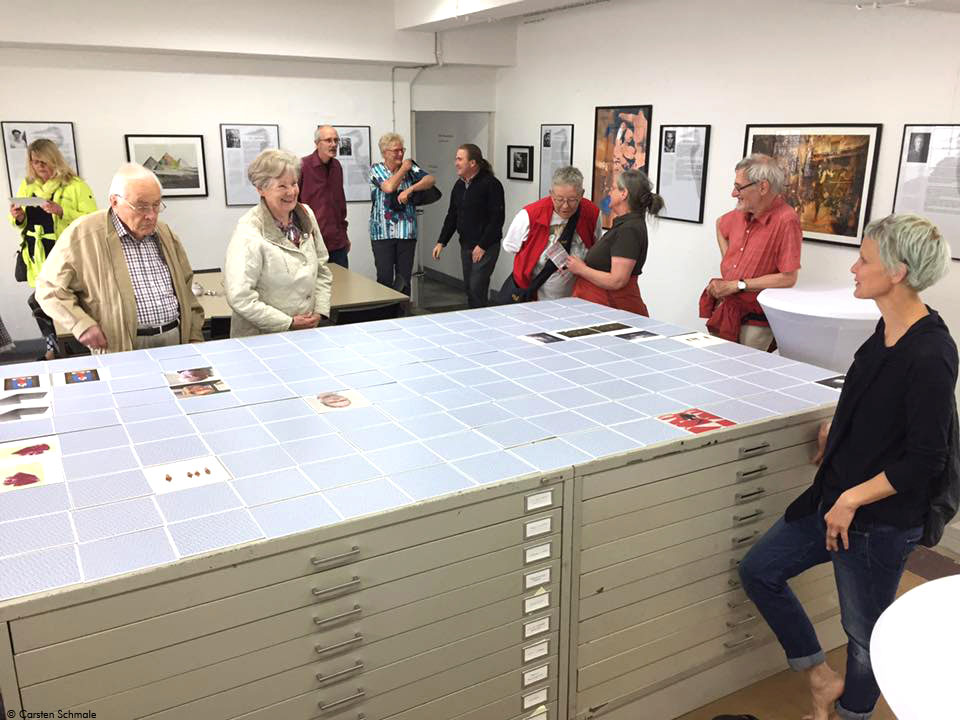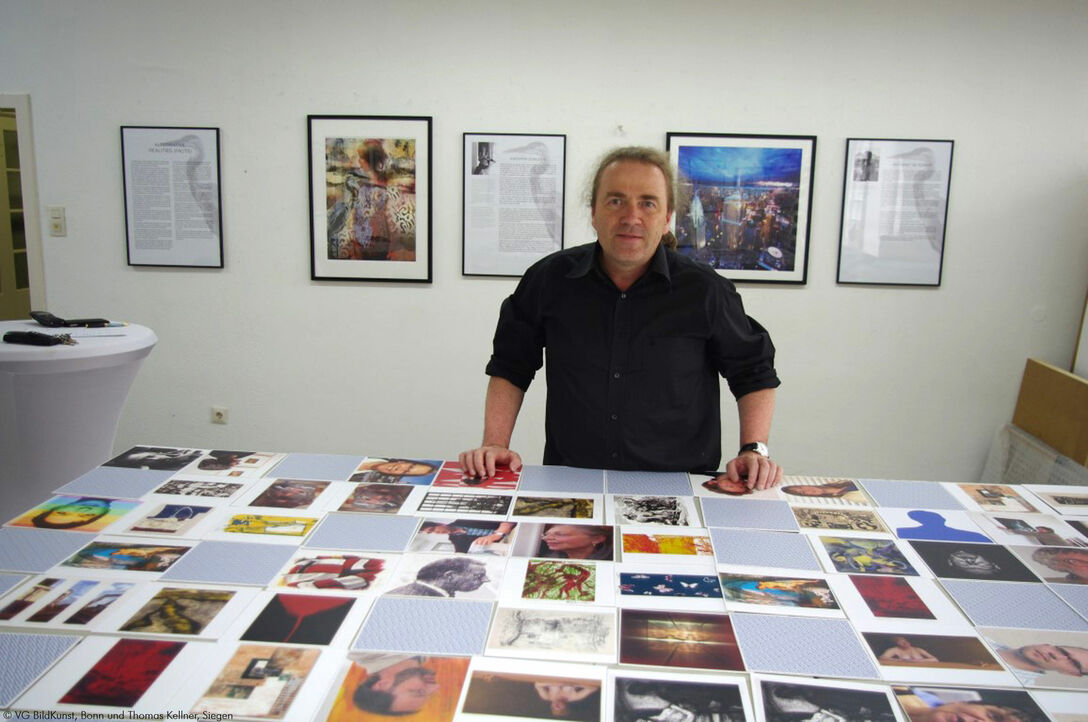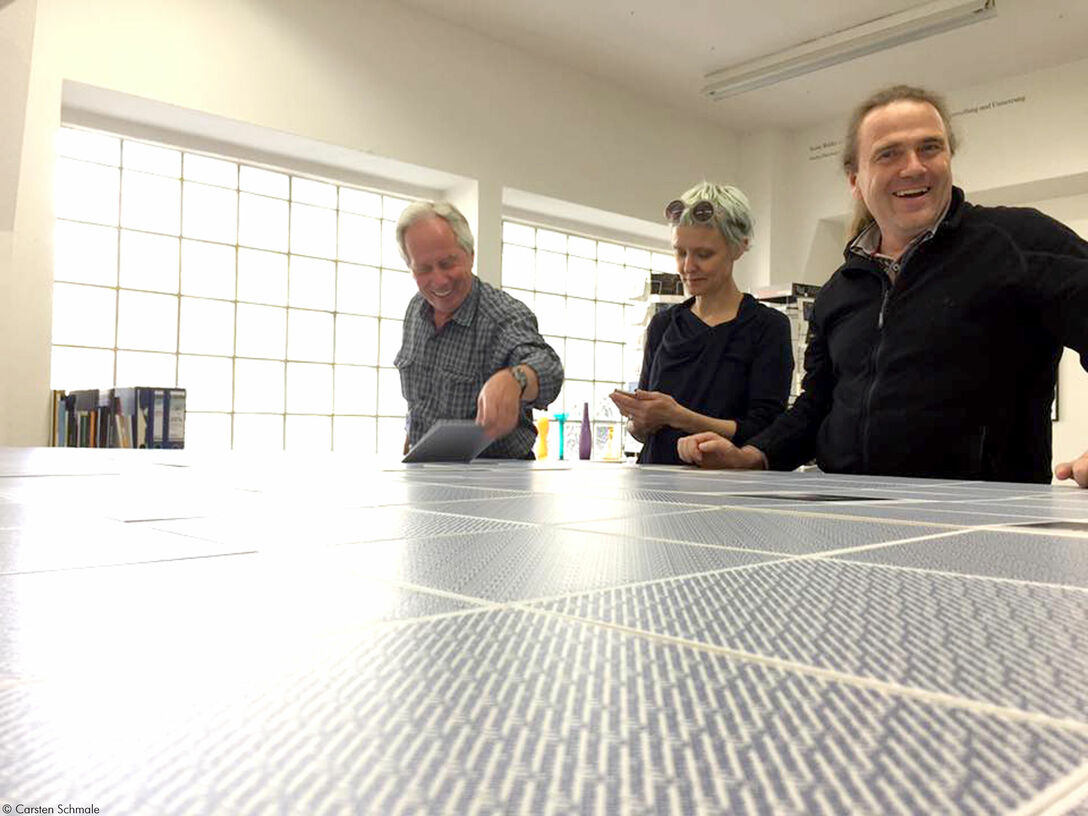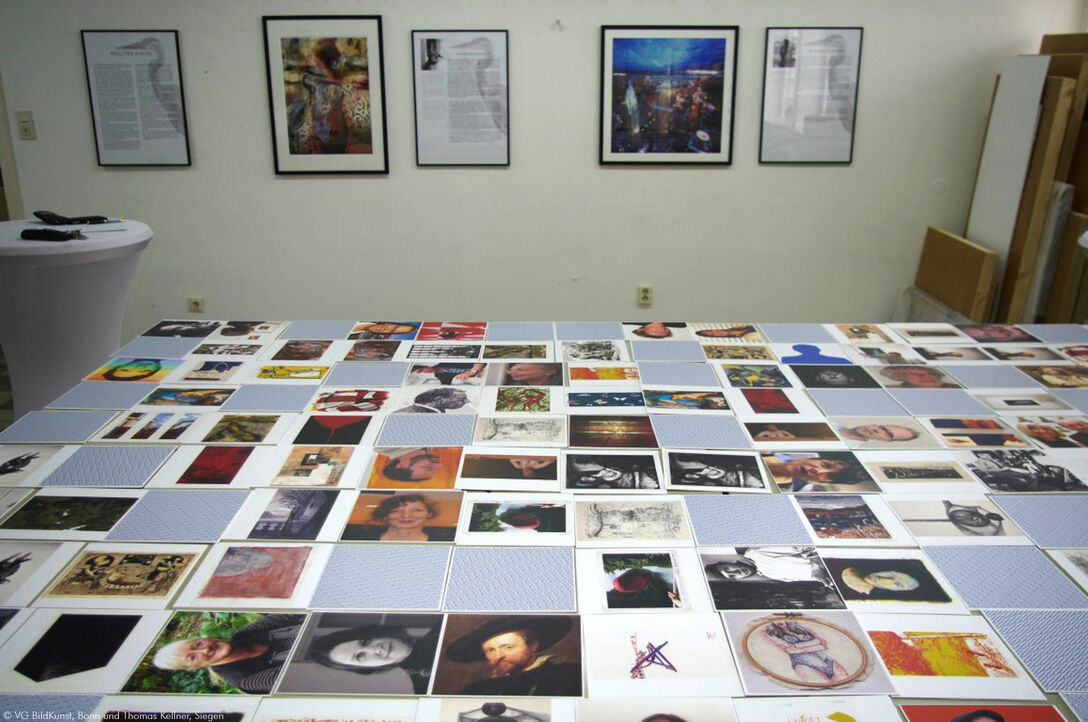
KunstSpiel
May 21, 2017
Studio Thomas Kellner, Siegen, Germany
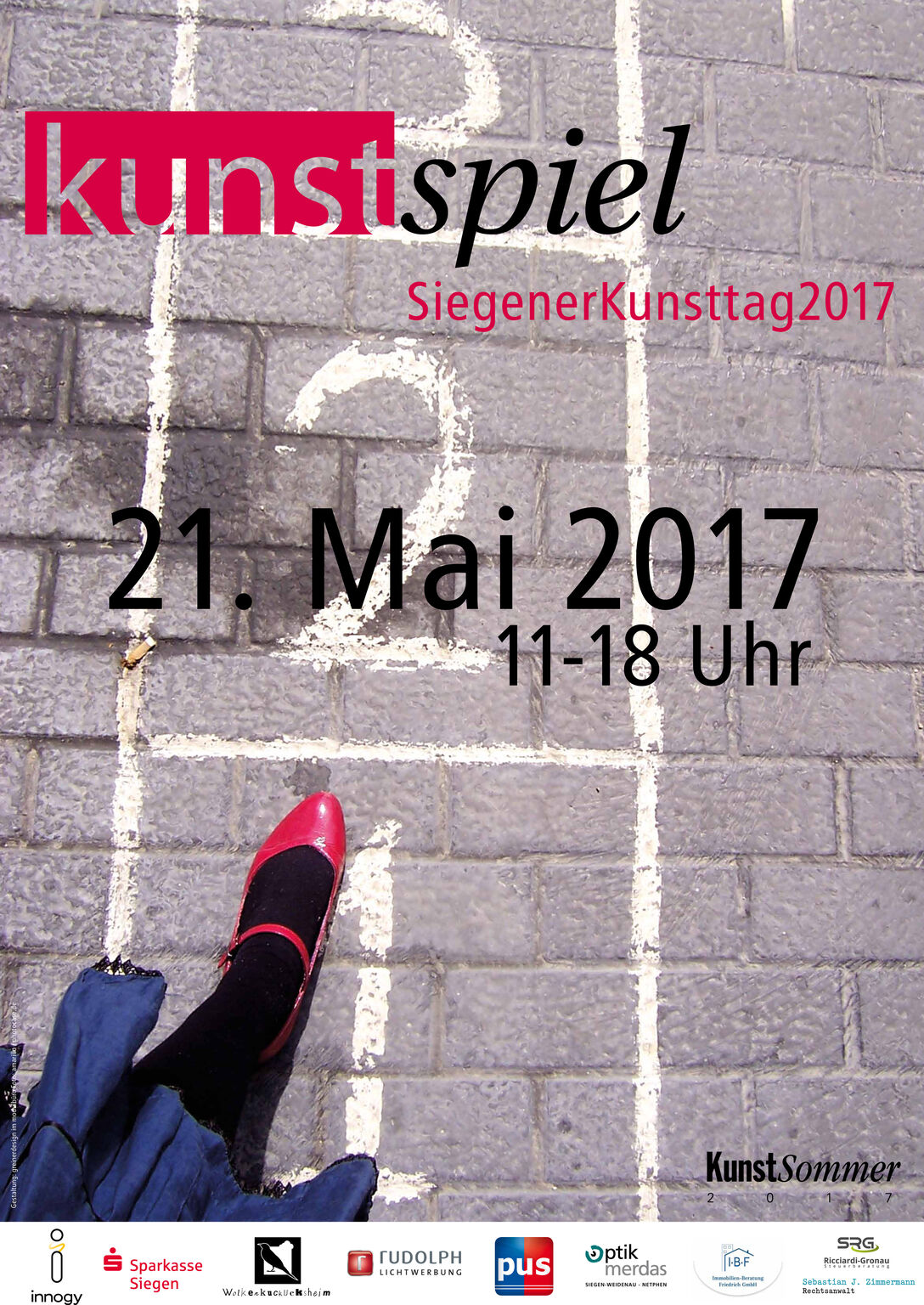
Program
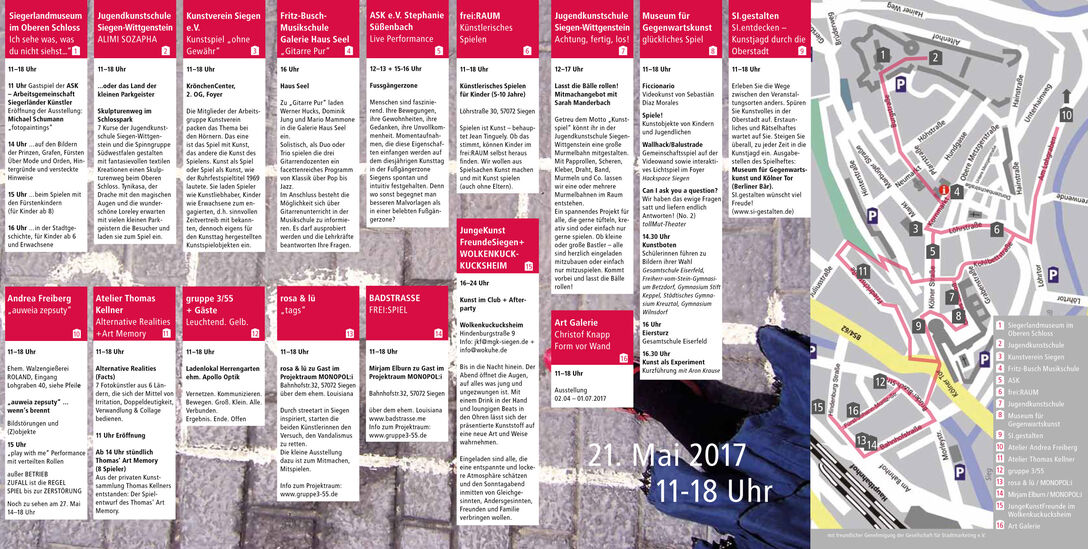
„All of these formal, compositional, reminiscent and visionary aspects explain Thomas Kellner's oevre up to now as an exciting and important contribution to contemporary photography.” Zehnder, Professor Frank Günter, PhD, Farbwelt 135-36, Kreis Düren, 2010, Düren, page 46
Alternative Realities (Facts)
May 21 - July 9 2017
Thomas' Art Memory
May 21, 2017
How do art and play go together? At the beginning of the 19th Siegen Art Summer on 21 May, on the occasion of ArtDay, museums, galleries and independent institutions will once again offer a diverse program. Admission to all events is free.
The studio Thomas Kellner, Friedrichstrasse 42, opens its doors on ArtTag at 11 am. The exhibition Alternative Realities (facts) will be on display in Kunstsommer 2017. From 2 pm onwards, in addition to the motto of this year's ArtDay "ArtPlay", in the studio of Thomas Kellner there will be also played - the Thomas' Art Memory. It is based on the private collection of the curating studio owner, consisting of works of art from mostly "Siegerländer" artists. However, this is not an ordinary memory. From 150 memory cards, not only the matching counterpart, but also the associated artist, must be found. It is played with eight people: four groups of two players.
However, playing is not limited to cards in the studio of Thomas Kellner. Seven artists from six countries worldwide use their photographs to portray reality. Max de Esteban (E), Bethany de Forest (NL), Andrés Wertheim (ARG / DE), Bill Armstrong (USA), Ploutarchos Haloftis (GR), Kathryn Dunlevie (USA) and Ludmila Steckelberg de Santana (BR / CAN) use for this irritation, ambiguity, transformation and collage.
The works of Spaniard Max de Esteban visualize his own statement on the relationship between nature and digitization in the age of abstraction. We are at a crossroad where life contexts are mapped by digital forms that we have developed, but also materials can be produced on digital way. This paradox, caused by digitization, leads to the alienation of humanity in our society today. Max de Esteban shows the relationships between objects and digital, industry and control of biology; in short: the digital and the real world.
Bethany de Forest, on the other hand, began to build dioramas during her studies at the art school (Utrecht and Amsterdam, the Netherlands) and then photographed them. Her goal is to create a "realistic" and at the same time absurd fantasy world in which someone can seemingly wander around. It creates the illusion that the photographed place is life-size, a real place to travel.
The works of Andrés Wertheim also explore the various levels of visible reality. In his documentaries, he records what lies before our eyes, knowing that the notion of truthfulness in photography raises doubts: does the camera never lie or is it merely a device that captures the existing, in a simple way? Trying to imitate it?
Kathryn Dunlevie's current project pays homage to the rich confusion of New Orleans overlapping cultures and the still perceptible aura of their stormy history. The intertwining of century-old history can be found in gardens, buildings and entire districts. In her work she combines photos with images from the internet, print albums and old photo albums - layer by layer. Each composition of elements of nature, history and contemporary art enchants, compels, confuses and creates its own reality.
The American Bill Armstrong also creates new dream-like realities by integrating colors in famous photographs from the early days of photography to the introduction of Kodachrome. Armstrong's process is to transform familiar images by photographing and adding color, whether digitally or using manual color filters and a light table or a combination of both.
Not only for Bill Armstrong are old photographs the basis of his art. Ludmila Steckelberg de Santana also uses them for her work, often accompanied by black and white photographs. Through the skill of embroidery, she transforms her works with color into textile interventions and places them in a romantic relationship between foreign past and own past, which lies in Brazil.
The art of using old materials to create something new is also to be discovered at Plotarchos Haloftis. He uses old letters, broken dolls and torn posters as the basis of his work. Destroyed by nature and brought to a new place - by chance or by the artist, they get a second life in the form of his photographs. For anyone but the artists, the items are no longer informative or usable. Through his art, they become heroes of darkness, surreal, poetic short stories.
The ArtDay 2017 in the studio Thomas Kellner is worthwhile for you, if you want to escape the reality of everyday life and dive into illusioned and digitized realities for a day.
There will be an overview of all stages of ArtDay 2017 at the end of March, a flyer available in stores and public buildings. Also on Facebook the 19th Siegen ArtDay is with its program.
opening hours
May 21, 2017 11 am - 6 pm
u.n.V.
Studio Friedrichstrasse
Studio Thomas Kellner
thomas kellner DGPh
Friedrichstrasse 42
57072 Siegen
t: 0 27 1/238 33 43
tk@thomaskellner.com
Thanks to the Kunstverein, the Museum of Contemporary Art, the city of Siegen and the Siegerland Museum for the organization.
